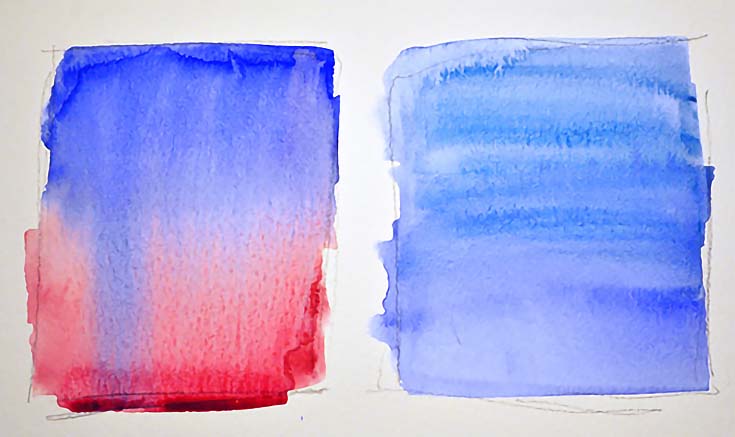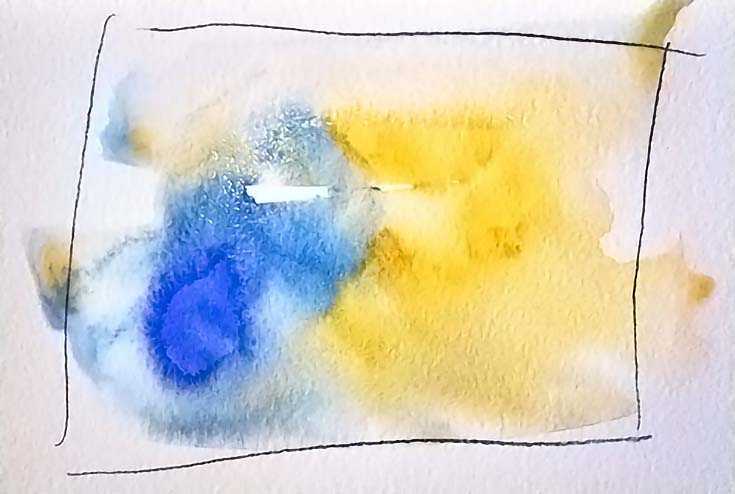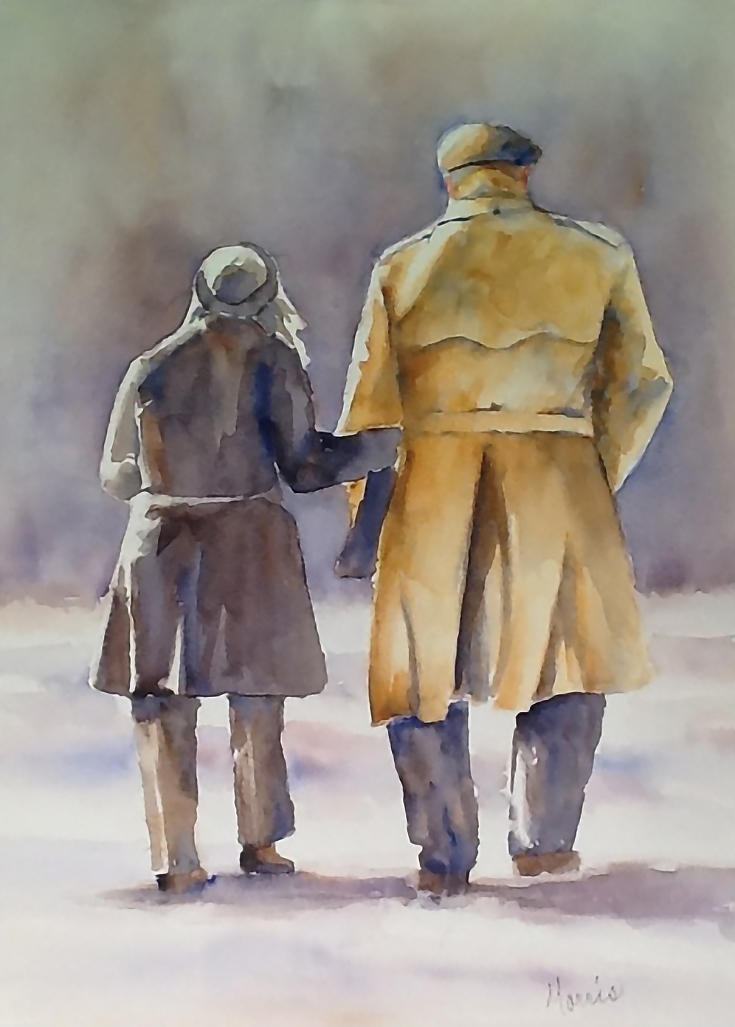In my last watercolor tutorial I demonstrated how to paint a flat wash, where a single color of paint is evenly and carefully applied across a large area. Today we’ll be looking at two more very important types of washes—graded washes and variegated washes.
The graded wash
A graded wash incorporates a gradual change in the value or intensity of the color as the wash progresses. The wash usually begins with a darker or more intense amount of watercolor paint. As the wash moves down the paper, water is added to the paint mixture to gradually lighten the paint as the wash progresses.
Many artists find the graded wash useful for painting skies. If you observe the sky over a landscape carefully, you will sometimes see that the sky is lighter as it gets closer to the horizon line. A graded wash emulates this natural phenomenon perfectly.
To practice a graded wash you will use the same technique that you used with the flat wash (learn how to paint a flat wash here) but as you move down the paper, each new stroke should have less pigment and more water in the “paint load” carried on your brush.
You can easily adjust your “paint load” by adding water to your paint mix on your palette, or you can just dip your brush in clean water after making each stroke. This will dilute the color mixture as you move down the wash.
The variegated wash
As you continue to observe how skies look over landscapes, you will probably see changes in the color of the sky closer to the horizon. Often the sky is a deeper blue toward the top, and more of a blue-green near the horizon line. (There is science that explains this, but as artists we can simply observe and record what we see!)
A variegated wash is what allows you to paint a sky that changes color—done correctly, it will shift from one color to another, with the two colors combining where they meet. This type of wash works best when painted directly on wet paper, because of the way the watercolor paint moves, mix, and blend on the wet surface.
To practice this wash in a controlled way, keep your paper tilted at an angle and paint it with clean water. Mix puddles of Ultramarine Blue and Cerulean Blue. Beginning at the top with the Ultra Blue, paint a stroke of color across the page, twice. Rinse the brush and pick up Cerulean. Paint the next stroke so that it just touches the last stroke of Ultramarine, and then finish painting the wash with Cerulean.
The angle of the paper will move the Ultramarine into the Cerulean to create a blended wash that moves from one color to the next.
While you can always control your washes with an angled surface, or a careful stroke, there’s something magical that happens the more you allow colors to mix freely on paper. . . this is the beauty of watercolor, and especially of variegated washes!
To practice a more spontaneous variegated wash, lay the paper flat and begin by painting the paper with clean water. Drop watery mixes of color onto the wet paper. The paint will move and spread in random ways while on a flat surface, which is always fun to watch.
For slightly more control, pick the paper up and tilt the surface guiding the flows of paint into each other; or, just use your brush to move the paint. While some mixing will always occur, you’ll probably notice that the original colors usually remain in large areas of the wash.
NOTE: Too many colors mixed together will make “mud.” Color is a subject we will tackle later on, but to simplify things, try to remember your color wheel. Colors mix well with colors directly next to them on the color wheel. Mixing across the wheel creates neutral browns and greys, or “mud.”
Washes can be used in many different ways
A wash is always useful for covering large areas with color, but they’re also very versatile. I often use them in the background of a painting to represent what is going on when I don’t want to add a lot of detail. For example, in the painting Arm in Arm, below, I used a loose neutral-colored wash to suggest certain mood.
Over the next few weeks, find as many watercolor paintings as you can and see how those artists use washes. Practice all three types of washes until you can control the flow of paint, blend colors, and create beautiful gradients.
Trust me when I say that painting watercolor washes is one of the most useful techniques you will ever learn. The more you paint, the more you’ll find you need it!
This post may contain affiliate links.




